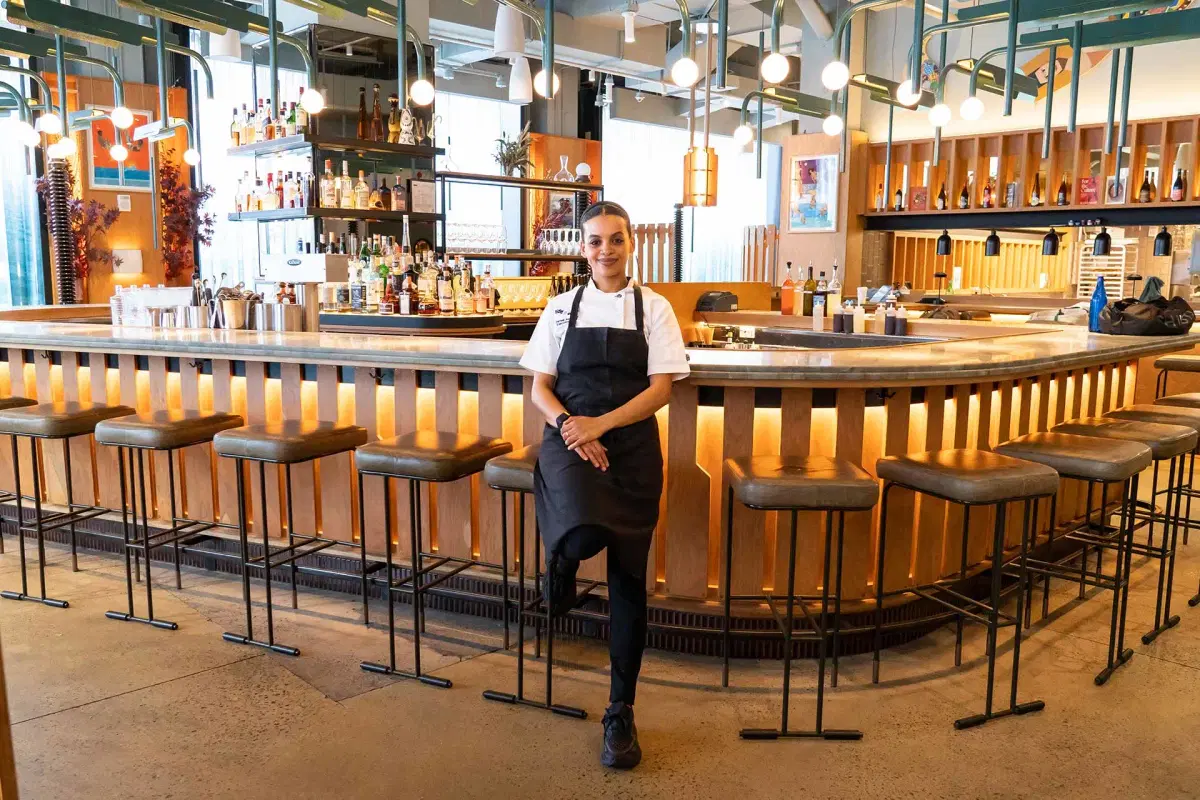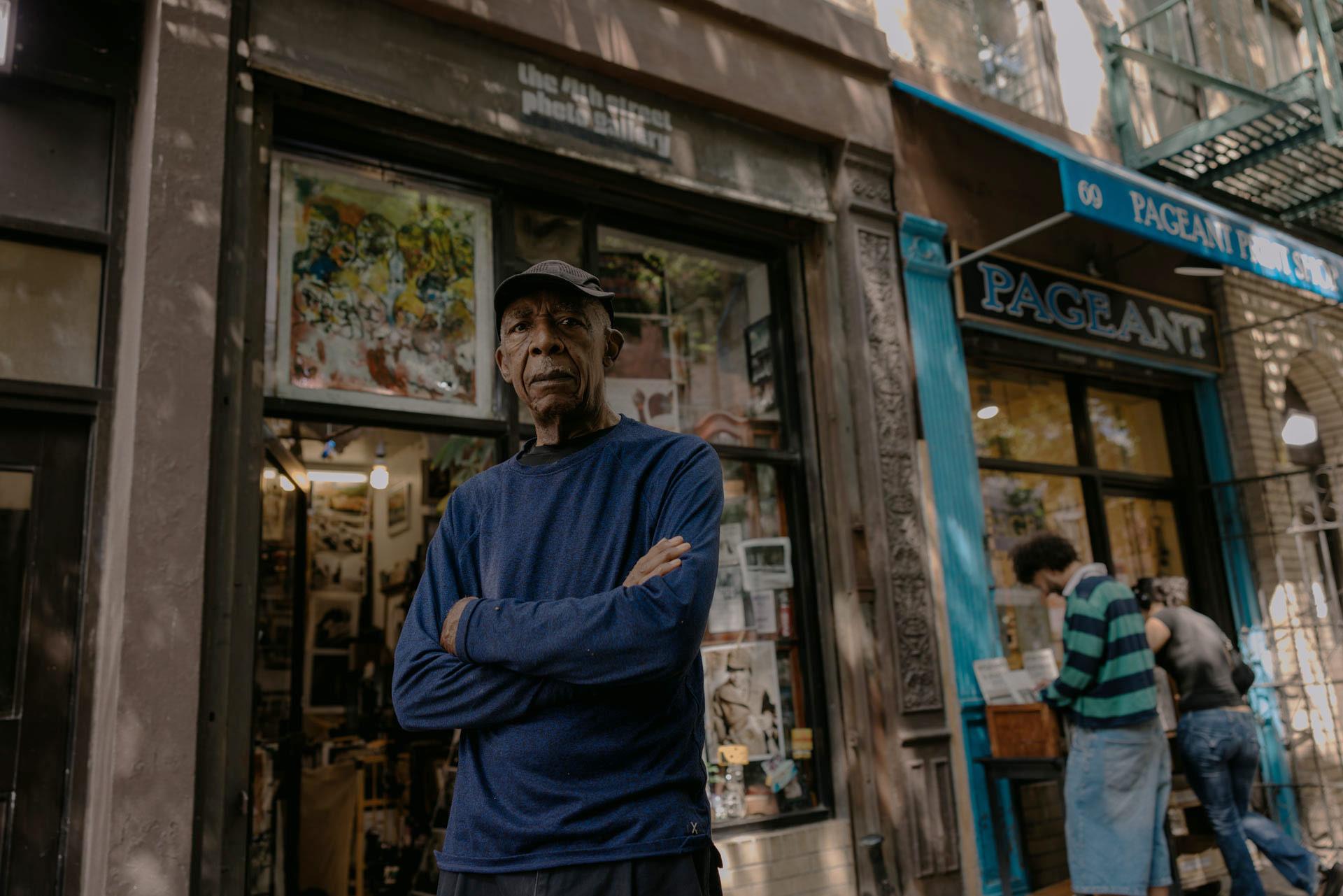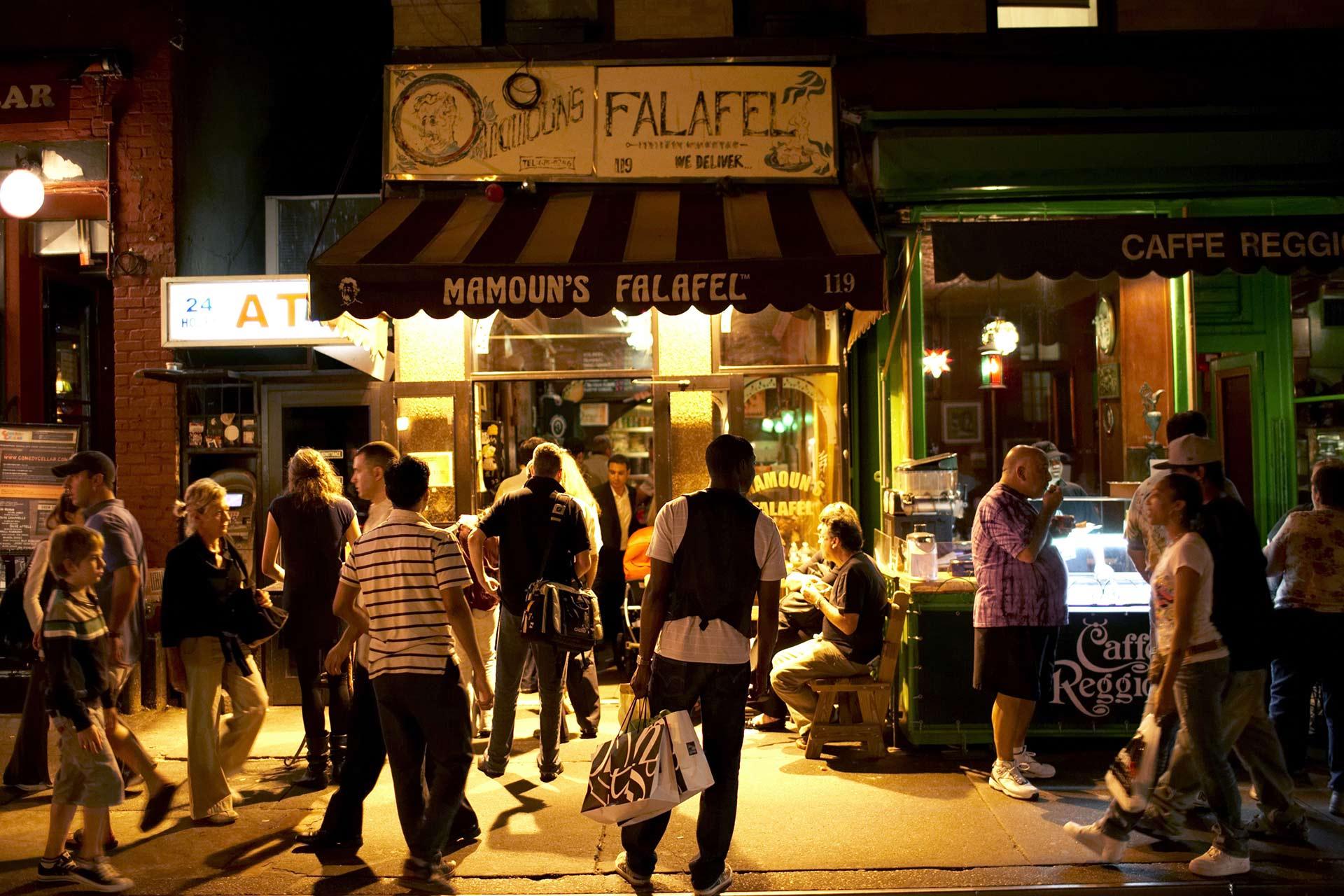This article is a companion piece to One Dish, our video series giving you a behind-the-scenes look at how NYC chefs create their best-known dishes, hosted by @consumingcouple on our Instagram page.
Before she began working at Hav & Mar, executive chef Fariyal Abdullahi was ready to leave the restaurant industry, disappointed that eight successful years in professional kitchens hadn’t made the impact she hoped for. After the pandemic uprooted her chef position in Texas, Abdullahi took a sabbatical in Ethiopia to ponder her next steps—until destiny called.
That call came from Marcus Samuelsson, the chef behind Harlem’s Red Rooster and many other notable restaurants, who invited her to collaborate on the launch of his upcoming Chelsea seafood spot. The concept would bring together global influences, drawing from his Swedish and Ethiopian heritage as well as that of the diverse team working behind the scenes.
For Abdullahi, who had long hoped to use the ingredients and staples of her Ethiopian heritage, like berbere spices, it was the creative freedom she had been waiting for. While she had worked at top restaurants like Michelin-starred Noma in Copenhagen, Samuelsson gave her the autonomy to fully express herself in the kitchen. That meant telling a personal story through food, prioritizing sustainability and partnering with local Black farmers and purveyors.
Since her return, Abdullahi has served as a guest judge on Chopped, created a plant-based dish featured at the 2021 Met Gala and been named a 2024 James Beard Award semifinalist for Emerging Chef. More important, she’s used her platform to support charitable causes close to her heart in Ethiopia.
One of the dishes developed for the original menu of the restaurant, which opened in 2022, is a rich summer pasta that came out of her earliest conversations with Samuelsson.
“We decided we needed a signature pasta dish that celebrated our favorite seafood,” she says. Since then, it’s become a crowd-pleaser and year-round inclusion. “There would be a riot if I ever took it off the menu.”

What’s in the Dish
The Havatini 2.0 features a slow-simmered uni and butter sauce, layered with shrimp, crab and garlic. The sauce is reduced to a butter-yellow velvety finish, so good, Abdullahi says, that diners frequently want to drink it straight from the bowl.
She finishes the dish with garlic panko crumbs for texture and a house-made chili crunch that fits the Ethiopian cooking ethos she carries with her: “I always need some heat in there.”

How It’s Made
While the Havatini was on the menu when the restaurant first opened, the dish was reimagined to solve a texture issue, and the 2.0 version was born.
“The difference in temperature from the dining room to the kitchen was breaking the sauce,” she says. “It wasn’t noticeable to guests, but I’d see it in the dish pit. We added more heavy cream for a permanent emulsion.”

What the Chef Wants You to Know
Abdullahi suggests starting your meal with the restaurant’s bread basket, which features biscuits, corn bread, crisp injera and flatbread—the last of which you might want to hang on to for a bit.
“Use it to sop up the remaining sauce,” she says. “Our guests have commented that they would drink the sauce with a straw if they could, so here’s me offering a better alternative.”

Why It Works
“It’s a perfect bite,” says Abdullahi. “The umami from the uni sauce, the subtle heat from the chili crunch and the texture from the garlic breadcrumbs leave the palate completely satisfied.”
Almost every part of the dish contributes to a low-waste kitchen philosophy. “The only thing not used in the dish is the shrimp shells,” Abdullahi says, “but we process that for another dish.”

Is It on the Menu for NYC Restaurant Week® Summer 2025?
Yes!
Find more articles in the series on our Savor NYC page.






